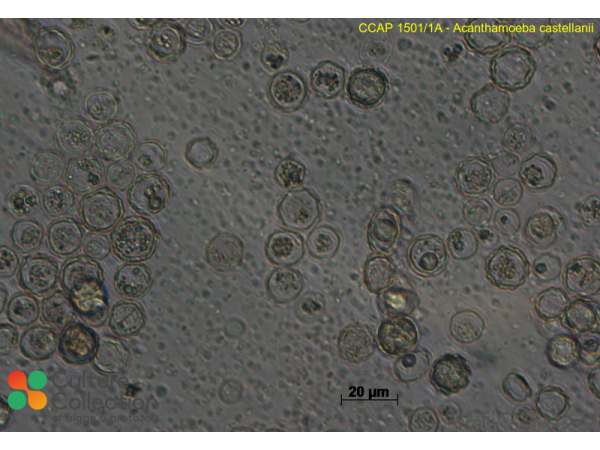References [ 17 ]
Kilvington S & Beeching J (1995) Identification and epidemiological typing of Naegleria fowleri with DNA probes. Applied and Environmental Microbiology 61(6): 2071-2078.
DOI: none
Kilvington S & Beeching J (1995) Development of a PCR for identification of Naegleria fowleri from the environment. Applied and Environmental Microbiology 61(10): 3764-3767.
DOI: none
Kilvington S, Gray T, Dart J, Morlet N, Beeching JR, Frazer DG & Matheson M (2004) Acanthamoeba keratitis: The role of domestic tap water contamination in the United Kingdom. Investigative Ophthalmology and Visual Science 45: 165-169.
Pickup ZL, Pickup R & Parry JD (2007) Effects of bacterial prey species and their concentration on growth of the amoebae Acanthamoeba castellanii and Hartmannella vermiformis. Applied and Environmental Microbiology 73(8): 2631-2634.
Taylor SJ, Ahonen LJ, de Leij FAAM & Dale JW (2003) Infection of Acanthamoeba castellanii with Mycobacterium bovis and M. bovis BCG and survival of M. bovis within the amoebae. Applied and Environmental Microbiology 69(7): 4316-4319.
Costas M & Griffiths AJ (1984) The esterases and acid-phosphatases of Acanthamoeba (Amoebida, Acanthamoebidae). Protistologica 20(1): 33-41.
DOI: none
Costas M & Griffiths AJ (1984) Taxonomic significance of the fatty acid composition of Acanthamoeba (Amoebida, Acanthamoebidae). Protistologica 20(1): 27-31.
DOI: none
Tsvetkova N, Schild M, Panaiotov S, Kurdova-Mintcheva R, Gottstein B, Walochnik J, Aspöck H, Lucas MS & Müller N (2004) The identification of free-living environmental isolates of amoebae from Bulgaria. Parasitology Research 92: 405-413.
Beattie TK & Tomlinson A (2009) The effect of surface treatment of silicone hydrogel contact lenses on the attachment of Acanthamoeba castellanii trophozoites. Eye & Contact Lens: Science & Clinical Practice 35(6): 316-319.
Wright SJL, Redhead K & Maudsley H (1981) Acanthamoeba castellanii, a predator of cyanobacteria. Journal of General Microbiology 125: 293-300.
Mardare C, Delahay RJ & Dale JW (2013) Environmental amoebae do not support the long-term survival of virulent mycobacteria. Journal of Applied Phycology 114: 1388-1394.
Kilvington S, Beeching JR & White DG (1991) Differentiation of Acanthamoeba strains from infected corneas and the environment by using restriction endonuclease digestion of whole-cell DNA. Journal of Clinical Microbiology 29: 310-314.
DOI: none
Hughes R, Andrew PW & Kilvington S (2003) Enhanced killing of Acanthamoeba cysts with a plant peroxidase-hydrogen peroxide-halide antimicrobial system. Applied and Environmental Microbiology 69: 2563-2567.
Martín-Pérez T, Criado-Fornelio A, Avila-Blanco M & Pérez-Serrano J (2018) Development and optimization of new culture media for Acanthamoeba spp. (Protozoa: Amoebozoa) European Journal of Protistology 64: 91-102.
Fuerst, PA (2023) The status of molecular analyses of isolates of Acanthamoeba maintained by international culture collections. Microorganisms 11(2): 295.
Corsaro D, Mrva M, Colson P & Walochnik J (2024) Validation and redescription of Acanthamoeba terricola Pussard, 1964 (Amoebozoa: Acanthamoebidae) European Journal of Protistology 94: 126091.
Pastrana C, Huete-Toral F, Privado-Aroco A & Carracedo G (2024) Efficacy of different disinfecting methods for contact lenses against Acanthamoeba castellanii Contact Lens and Anterior Eye -: 102326.










